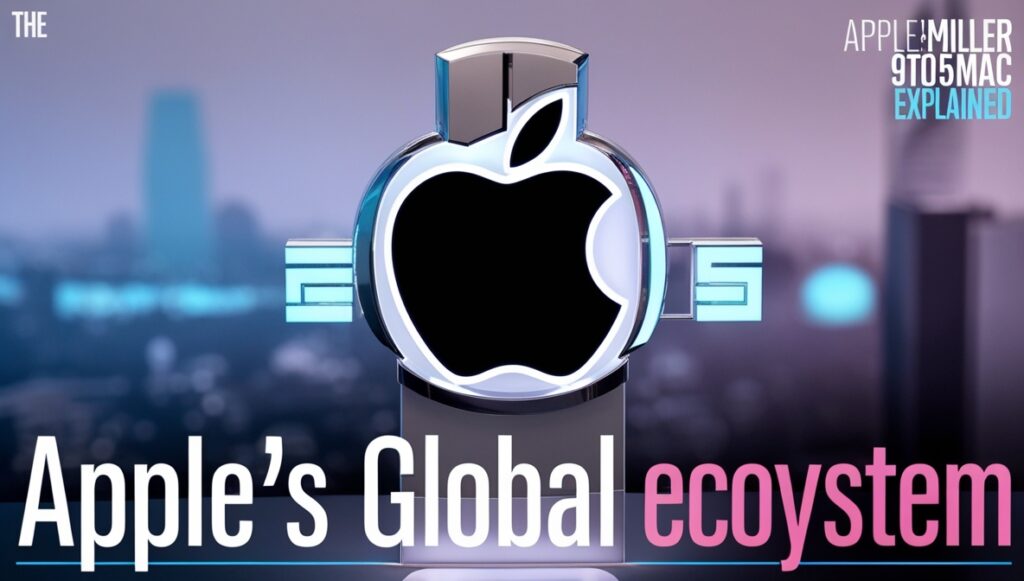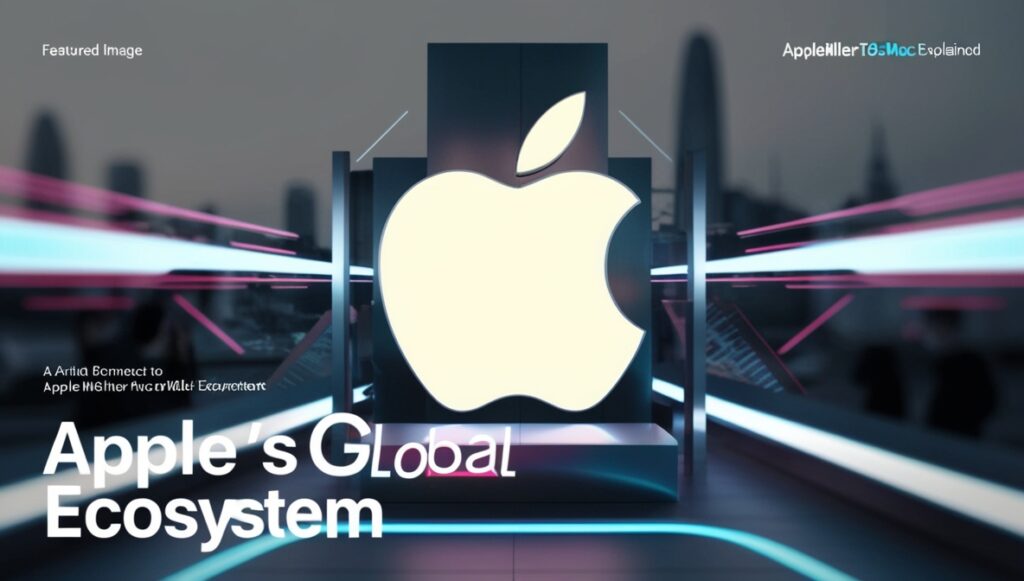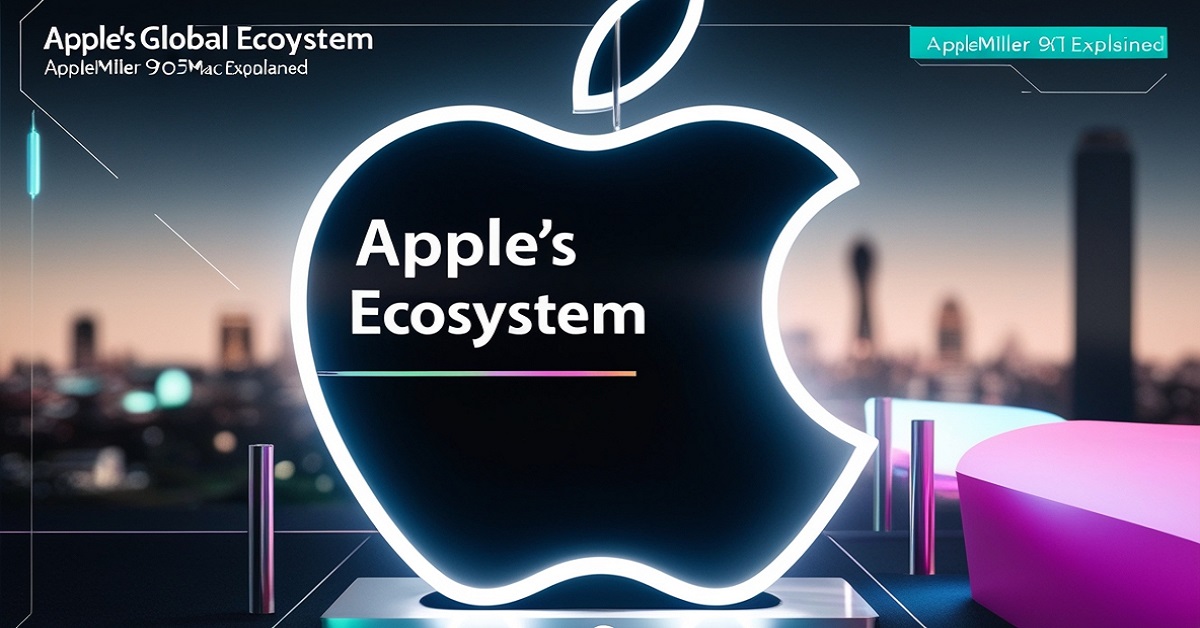Apple Sign AppleMiller9to5Mac Apple Inc. has grown into much more than a technology company it has built a lifestyle ecosystem. From the iPhone in your pocket to the MacBook on your desk, Apple products aren’t just standalone devices. They’re part of a vast, interconnected web designed to make your digital life seamless.
One critical piece of this ecosystem is Sign in with Apple a simple yet powerful way to log into apps and websites while maintaining privacy. Platforms like 9to5Mac often cover Apple’s strategic moves, but in this article, we’ll take a deeper look. We’ll explore not just the devices, but also the software, services, security features, and Apple’s ambitious future vision.
Understanding Apple’s Ecosystem – More Than Devices

The term Apple ecosystem refers to the way Apple integrates its hardware, software, and services into one interconnected system. Unlike competitors that focus on isolated products, Apple’s real strength lies in the experience of connection.
Here’s what that means in practice:
- You can start browsing in Safari on your iPad and pick up exactly where you left off on your MacBook.
- Listening to a podcast on Apple Podcasts while walking? Switch to your HomePod when you get home without hitting pause.
- Pay for groceries with Apple Pay and instantly see the transaction update across your devices.
Apple has designed its devices to work as a team, not in silos. This cross-device synergy is a major reason why many users find it difficult to leave Apple once they’ve entered the ecosystem.
“Once you buy your first Apple device, you’re not just buying a product—you’re stepping into an ecosystem that rewards you for staying.” – Tech Analyst at IDC
The Role of Apple ID and Sign in with Apple in Secure Authentication
At the heart of this ecosystem lies the Apple ID. It’s more than just a login—it’s your passport to everything Apple.
Why Apple ID Matters in the Ecosystem
- Centralized access: One ID gives you entry to the App Store, iCloud, Apple Music, and more.
- Seamless syncing: Contacts, calendars, and settings follow you across devices.
- Secure data handling: With features like iCloud Keychain, you don’t have to memorize dozens of passwords.
Think of your Apple ID as the glue that holds your digital life together within Apple’s walled garden.
Sign in with Apple – A Safer Alternative
Launched in 2019, Sign in with Apple is Apple’s response to login methods like Google or Facebook. But unlike its competitors, Apple’s approach prioritizes privacy.
Key features include:
- Hide My Email: Creates a randomized email address, forwarding messages to your real inbox without revealing it.
- Fewer spam risks: If a service starts sending junk, you can delete the random email.
- Cross-device use: Works seamlessly on iPhone, iPad, and Mac.
A 2022 survey by Statista found that 70% of Apple users preferred “Sign in with Apple” over other login methods because of its privacy-first approach. That trust is a huge competitive advantage for Apple.
Apple Devices in Harmony – A Cross-Device Experience
Apple’s hardware lineup isn’t just about premium design. It’s about how they work together effortlessly.
Everyday Integration
- Music & Media: Play a song on your AirPods and switch to a MacBook or Apple TV App without interruption.
- Gaming: Start an Apple Arcade game on iPhone, continue on iPad, finish on Mac.
- Video Streaming: Watch a movie on Apple TV+ at home, continue on iPhone during your commute.
These seamless handoffs are powered by Apple’s Continuity and Handoff technologies, which make device-switching frictionless.
Special Mentions – Ultra and Pro Devices
- Apple Watch Ultra: Tailored for athletes, adventurers, and divers, offering rugged durability and advanced health tracking.
- MacBook Pro: A workhorse for professionals, equipped with Apple’s M2 Pro and M2 Max chips, delivering industry-leading performance.
- Apple Vision Pro: Apple’s big leap into augmented reality (AR), blending physical and digital worlds for work, play, and entertainment.
Each device adds its own flavor but remains deeply integrated into the broader Apple world.
Apple Software Backbone – iOS, macOS, and Beyond
If Apple devices are the body, its software is the nervous system. Without it, the ecosystem wouldn’t exist.
Why Software is the Glue
- iOS (iPhone) and macOS (Mac) are designed to complement each other.
- The iPadOS multitasking update bridges the gap between tablet and laptop.
- Apple’s public beta programs let users test upcoming features, giving a glimpse into future ecosystem improvements.
This tight software-hardware integration is something most rivals struggle to match.
iCloud Keychain and Privacy Features
Password fatigue is real. According to LastPass, the average internet user has over 80 online accounts. With iCloud Keychain, Apple eliminates that hassle by securely storing and auto-filling login details.
Combined with Sign in with Apple, users get a streamlined, one-tap login experience without compromising security.
Apple’s Unified Apps and Services
Apple doesn’t just make devices—it creates apps and services that complete the ecosystem experience.
Some standout examples:
- Apple Music App: Competes with Spotify, offering over 100 million songs (Apple, 2023).
- Apple TV+: Known for award-winning originals like Ted Lasso and The Morning Show.
- Apple Podcasts: One of the largest podcast libraries worldwide.
- Apple Maps: Improved drastically over the years, now a strong alternative to Google Maps.
Perhaps the strongest example of unification is the Apple TV App, which aggregates content from multiple streaming platforms into one hub. Instead of switching between Netflix, Disney+, or HBO, you can access them all from a single interface.
For developers, Apple provides API tools to ensure their apps integrate seamlessly with features like Sign in with Apple, iCloud syncing, and more.
Privacy and Security as Apple’s Competitive Edge
Apple has consistently marketed itself as the privacy-first company—and it backs that up with features.
- On-device processing: Many Siri and AI functions run locally on the device, not in the cloud.
- App Tracking Transparency (ATT): Launched in iOS 14.5, requiring apps to ask permission before tracking users.
- Email privacy: With features like Hide My Email, spam and unwanted marketing are drastically reduced.
A Pew Research survey (2022) revealed that 81% of Americans feel they have little to no control over data collected by companies. Apple’s ecosystem directly addresses this pain point, which strengthens user loyalty.
Future of Apple’s Ecosystem – From Foldables to AR

Apple’s innovation pipeline is always buzzing, and rumors suggest several exciting possibilities:
- Foldable iPhone: Analysts at Display Supply Chain Consultants (DSCC) predict Apple could release a foldable device by 2026.
- Apple Vision Pro: Marks Apple’s serious entry into augmented reality, with applications for gaming, productivity, and entertainment.
- Apple Arcade with AR: Imagine playing immersive games that blend digital and real-world environments.
For developers and gamers, these advancements open new opportunities for creating ecosystem-driven experiences.
Why Apple’s Global Ecosystem Stands Apart
Let’s compare Sign in with Apple to other login methods:
| Feature | Apple | Shopify | |
|---|---|---|---|
| Hide My Email | ✅ Yes | ❌ No | ❌ No |
| Works across devices | ✅ Yes | ✅ Yes | ✅ Yes |
| Minimal data collection | ✅ Yes | ❌ No | ❌ No |
| Privacy-first marketing | ✅ Yes | ❌ No | ❌ No |
Apple’s closed but user-centric ecosystem ensures consistency, privacy, and long-term loyalty. That’s why switching to Android or Windows often feels like giving up convenience.
FAQs About Apple’s Ecosystem and Sign in with Apple
What makes Apple’s ecosystem different from competitors?
Apple focuses on tight integration across devices and services, offering a seamless experience competitors struggle to replicate.
Is Sign in with Apple safer than Google or Facebook login?
Yes. Apple collects less data, hides your email, and reduces spam risks.
Can non-Apple users take advantage of Apple services?
Some, like Apple Music, are available on Android and Windows, but the full ecosystem benefits are exclusive to Apple hardware.
How does Apple Vision Pro fit into the ecosystem?
It extends Apple’s reach into augmented reality, designed to integrate with existing services like Apple Arcade and Apple TV+.
Will Apple launch a foldable iPhone soon?
Rumors suggest by 2026, but nothing has been officially confirmed.
Key Takeaways – Living Inside the Apple Ecosystem
Apple’s ecosystem isn’t just about shiny devices—it’s about how they work together to simplify your digital life.
- Devices: iPhone, iPad, MacBook, Apple Watch, and Vision Pro work in harmony.
- Software: iOS, macOS, and iCloud Keychain keep everything connected.
- Services: Apple Music, Apple TV+, Apple Maps, and Podcasts enrich user experiences.
- Privacy: Sign in with Apple and Hide My Email protect personal data.
- Future: Foldable devices and AR integration point toward an even more immersive world.
Ultimately, “Sign in with Apple” is more than a login—it’s a symbol of Apple’s commitment to trust, security, and ease of use.









